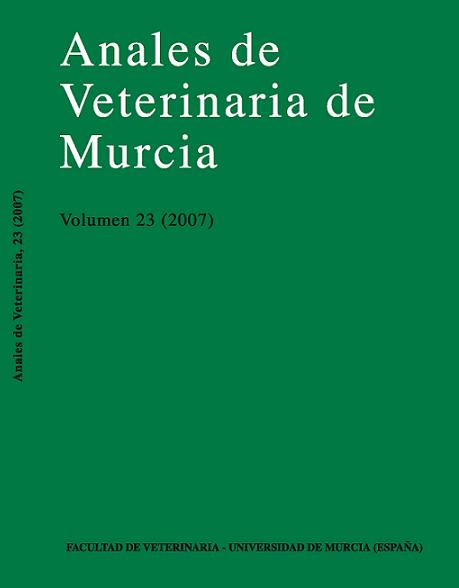PROTEINURIA EVALUATION IN DOGS WITH CUSHING DESEASE BEFORE AND AFTER THE TREATMENT WITH RETINOIC ACID AND KETOCONAZOL
Abstract
The hypercortisolism has been considered the originator of the renal disease due to problems in the glomerular compartment. The early and non invasive diagnosis is carried out through the qualitative and quantitative study of the urinary proteins. The qualitative method determines the origin and the quantitative method determines the magnitude of the loss. Recent studies suggest that the retinoic acid (RA) may be an effective therapeutic alternative for the Pituitary dependent Cushing, instead of the usage of Ketoconazol (Ktz) and other antisteroideogenic drugs. This work was carried out in order to evaluate the proteinuria in dog with Pituitary dependent Hypercortisolism (PDH) and to determine if the therapy with RA and Ktz can control it. The proteinuria was studied in 22 dogs with PDH, 14 of them treated with RA and 8 with Ktz for six months. The quantitative determination (Pyrogallol Red technique) through the relation protein/creatinine (UP/C) showed that in 11/22 (50 %) the value was abnormally high ( > 0,51), doubtful in 3/22 (14 %) and in 8/22 (36 %) the proteinuria values were considered normal (< 0,3). The qualitative study of the proteinuria (SDS-PAGE Technique) showed that out of the 11 dogs with high UP/C values, 3 of them had glomerular proteinuria (27,3 %), 6 glomerulo-tubular (54,54 %), and 2 physiological or normal proteinuria (18,18 %). The 3 dogs with doubtful UP/C values had by the SDS-PAGE, 2 glomerular proteinuria, and 1 physiological. One dog with normal UP/C value had tubular proteinuria by the qualitative method. The total number of dogs with glomerular damage damage was 11 (50 %). The UP/C values remained the same by the end of the study with no significant changes and the statistic evaluation between the treatments did not show significant differences. Any dog with normal proteinuria became abnormal and those with high UP/C developed renal insufficiency. We conclude that, at the moment of the diagnosis, it is expectable that 50 % of the dogs with DPH have glomerular damage, and that the specific treatment of Cushing does not control the renal disease.Downloads
-
Abstract3427
-
PDF (Español (España))1188
Creative Commons Attribution 4.0
The works published in this journal are subject to the following terms:
1. The Publications Service of the University of Murcia (the publisher) retains the property rights (copyright) of published works, and encourages and enables the reuse of the same under the license specified in paragraph 2.
© Servicio de Publicaciones, Universidad de Murcia, 2019
2. The works are published in the online edition of the journal under a Creative Commons Attribution-NonCommercial 4.0 (legal text). You can copy, use, distribute, transmit and publicly display, provided that: i) you cite the author and the original source of publication (journal, editorial and URL of the work), ii) are not used for commercial purposes, iii ) mentions the existence and specifications of this license.

This work is licensed under a Creative Commons Attribution-NonCommercial-NoDerivatives 4.0 International License.
3. Conditions of self-archiving. Is allowed and encouraged the authors to disseminate electronically pre-print versions (version before being evaluated and sent to the journal) and / or post-print (version reviewed and accepted for publication) of their works before publication, as it encourages its earliest circulation and diffusion and thus a possible increase in its citation and scope between the academic community. RoMEO Color: Green.




